|
Disclaimer: We are not connected to Book Brush in any way other than as users of the product that has been reviewed. This review has not been paid for by Book Brush or by any other person or organisation.  This article is a review of the Book Brush app which allows authors to design their own book covers, rather than having to pay someone else a lot of money to do that for them. I have to say up front that some of the things that Book Brush allows you to do can be done just as easily in PowerPoint (if you are good at using PowerPoint) but, equally, some of the features are unique. And what is most unique as that it draws together everything you may need to be able to do under one URL. The service is provided on an annual subscription basis, charging at 3 levels: silver, gold and platinum. We paid for the silver level ($99, about £85) as that provided the things we needed right there and then (we knew we could upgrade later if we wanted to). Looking at the other two packages, it is hard to see them offering that much more – but on the other hand if it is something you want to do repetitively and you have no other way of doing it, you may regard the extra money as being well spent. I’ll cover the differences in the subscription levels a little later in this blog. "doing it myself was a no-brainer" The first thing I found useful was the introduction video that showed me how to use the app. I was able to watch it before I had even subscribed, and it persuaded me that what was on offer was going to save me money. Typically, we pay a designer on fiverr.com around $100 to provide us with an ebook and paperback cover package (with us providing the images to be used) and, as publishers, we may need a dozen of those each year, costing around $1,200. So, paying $99 a year and getting one of our team to do it was a no-brainer, providing we can create the sorts of designs that we want. How long does it take to design a cover?  Having watched the video and learnt the basics, and combining it with some use of PowerPoint (I’ll tell you why later) I was able to create a cover for the next Carter’s Commandos book in around 15 minutes. OK, the design isn’t complicated, but using the sorts of templates that are available within Book Brush, it wouldn’t have taken much longer to produce something more elaborate. I was able to do that after watching just one video and spending about an hour playing around with the various features. What’s more, I rather enjoyed doing it because the results are so easy and quick to see and it’s fun to be able to experiment with different designs. Warning to procrastinators: It is very easy to spend a lot of time playing with Book Brush while convincing yourself you are doing something productive. So keep an eye out and don't fall into that trap when you should really be writing. At the end of the process we know that by using Book Brush templates, our finished cover is going to be fully compatible with the technical requirements for KDP and other book publishing sites. But the biggest advantage is the range of templates that are available and how you can manipulate them to create a design that is unique to your book. The templates and other images are conveniently organised into genre specific groups.  KDP cover creator offers you about a dozen templates and they are pretty much fixed. You can add your own images, of course, but trimming them is difficult and it is inevitable that your book cover is going to look like hundreds of others, which is where Book Brush offers one of its great advantages. Not only that, but you have an almost unlimited ability to change colours and fonts. The platinum subscription for Book Brush offers the flexibility to remove backgrounds from images, but you may not want to pay for that. Removing background allows several images to be combined to create unique covers. Which is where PowerPoint comes in. If you know how to do it, you can remove backgrounds from images in PowerPoint, save the combined image as a .jpg and then import it into Book Brush ready to use. I’m not going to go into detail about how to do that in this blog. We searched YouTube and found this “how to” video for people who don’t already know. Along with all the templates Book Brush also has access to hundreds of thousands of free to use images which you can apply to your covers but, of course, you can also create or buy your own. They have a wide range of fonts and all the special affects you would expect to see for applying shadow, changing transparency etc. If you want to use a particular font and it isn't available in Book brush, you can import it. 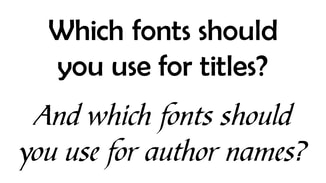 There are also some blogs on the site that could be helpful to you, such as the one we read to discover what fonts work best for which genres and which should be paired together to differentiate between titles, sub-titles and author names. So, what more do you get if you upgrade? With the gold package you get templates into which you can insert your finished covers in suitable formats to use for your social media marketing, cover reveals etc, such as showing the cover in a Kindle frame with accompanying promotional text. That was about all I saw there that was different and not something that I considered to be worth paying for. With platinum you get the ability to create video trailers for your books, by combining either your own video images or using their collection of stock video. To that you can add music or a narration. The package is quite easy to use, can create videos compatible with the different social media platforms and the results look very professional. But it isn’t something we would use a lot so, in our opinion, it didn’t justify the additional $147 subscription fee.  If they offered the opportunity to buy a one-off video package for $10 - $15, we’d certainly use it, but I don’t think the subscription offers value for money unless you’re going to be creating a lot of video trailers. Where Book Brush really comes into its own is in creating paperback and hardback covers. With the wide range of trim sizes on offer through KDP and the wide variation of page counts between books, coming up with a PowerPoint template that works for every book is impossible, so it’s all down to trial and error, which can take hours of work to get right. But Book Brush just asks you how many pages your book has and then creates a custom template for you which is guaranteed to pass KDP’s quality standards. All you have to do is overlay the different content you want to use for your design and, again, you can use their designs and images or create your own. So, overall we are quite happy with Book Brush. It’s easy and quick to learn and you can start producing professional looking book covers within an hour of paying your subscription. We certainly recommend the silver package. Whether you want to pay more for the extra buzzers and bells is down to you. If you would like to know more about Book Brush, click/tap here. If you have enjoyed this blog or found it informative, be sure not miss future editions by signing up for our newsletter. We’ll even give you a free ebook for doing it. Just click the button below.
0 Comments
 A cautionary tale for anyone who uses Amazon to publish their titles in paperback, whether independently or through a publisher. If you have only ever used KDP then there shouldn’t be any problem, but for anyone who uses, or has used, a third-party printing service, this could be a bear trap waiting for you. If you are a small publisher, then this is definitely something of which you should be aware. Now, as we know, Amazon are a huge global internet supplier, not just of books but for pretty much anything. If they were a High Street (or Main Street if you prefer) outlet they would be present not just in very High Street in Europe and North American, they would be present in villages in the middle of Borneo that no outsider has ever seen. That’s how big they are. So, you would think that they would have simple processes in place for the resolution of issues. You would be wrong to think that. Several of the authors we represent used to publish through another small publisher. I’ll call them Fabulous Publishing for the sake of anonymity. A couple of years ago the owner of Fabulous Publishing decided he didn’t want to be a publisher anymore and closed his company down. As part of the close-down, Fabulous Publishing unpublished all the titles they had listed on Amazon (and on other etail sites). Fabulous Publishing also returned the publishing rights for the titles to the authors, so they could go elsewhere to be published, if they wished. Some of those authors went to a publisher we’ll call Selfishgenie Publishing, because we don’t require anonymity. Yes, we signed them and published their books, both as ebooks and as paperbacks. But Fabulous Publishing used a third-party printer to print their paperbacks. We’ll call them Wonderful Printing. They are a big company; they know what they are doing. When Fabulous Publishing closed down, Wonderful Printing contacted Amazon and told them that the relevant titles were no longer available as paperbacks through them and asked Amazon to “de-list” them. You would think that would be the end of the matter – but if it was, you wouldn’t be reading this blog because I would have no story to tell. "And that is where we hit our first speed bump." You will be familiar with Amazon Marketplace. This is where small traders sell goods using Amazon’s platform as their sales channel, for which Amazon receives a slice of the action. There’s nothing wrong with that, it makes good sense to “sweat the assets” as it’s known in business. But one of the things those small traders sometimes sell is second-hand books. And that is where we hit our first speed bump. Because a trader was selling one copy of a title by one of our authors, we couldn’t sell any of the paperback of the same title that we had published. Until that second-hand copy was sold, the listing showed the paperback as being the one published by Fabulous Publishing. But you couldn’t actually buy a brand new copy of Fabulous Publishing's product because it was no longer being printed by Wonderful Printing. We submitted a complaint and were told by Amazon that the trader selling his second-hand copy was entitled to do so and until that copy had been sold, all the publishing details for the paperback version of the title had to remain as "Fabulous Publishing" and our brand-new paperbacks couldn’t be displayed. That was it – we couldn’t sell any of this title as a paperback until Joe Shmo from Nowheresville had sold his second-hand copy. The only way out of this was for our author to buy the second-hand copy so that the listing could be changed. So, problem solved. "So, we went back to Amazon and asked them to fix it." No it wasn’t. The listing for the paperback was still showing as the one for Fabulous Publishing which, as already established, isn’t available. While our edition was available but couldn’t be purchased because of this ridiculous "through the looking glass" situation. So, we went back to Amazon and asked them to fix it. Their reply was that they couldn’t take instructions to fix it from us. It had to come from Fabulous Publishing who, of course, no longer exist. Fortunately, the former owner of Fabulous Publishing is a personal friend and was happy to help. He contacted Amazon with details of not just that title, but all the other titles that he had published as paperbacks and asked for them to be de-listed. (But imagine if there was no way of contacting Fabulous Publishing anymore? We definitely dodged a bullet there). The reply he got surprised him. Because the sales channel for the paperbacks had been set up by Wonderful Printing, on behalf of Fabulous Publishing, they couldn’t take instructions from Fabulous Publishing either. Only Wonderful Printing could make the request. "This time we really were in a dead end." So, (the former) Fabulous Publishing contacted Wonderful Printing, who contacted Amazon. Amazon told them how to delist the titles. But when Wonderful Printing tried to follow the instructions, Wonderful Printing were told they weren’t authorised to do so. This time we really were in a dead end. So, we here at Selfishgenie Publishing still can’t publish those paperback titles formerly published by Fabulous Printing. "So Amazon are lying to their customers." And Amazon’s response? Basically they are saying that Wonderful Printing are the problem, even though I have seen the emails that show clearly that Wonderful Printing have done everything asked of them. If you go onto Amazon to try to buy a copy of the paperback book, it shows that there is one in stock. This is normal for “Print on Demand” (POD) books. But if you click to buy it and put it in your basket, you are then told it is “temporarily out of stock”. No it isn’t temporarily out of stock. The product sold by that publisher is permanently out of stock. So Amazon are lying to their customers. Meanwhile, Selfishgenie publishing, who would gladly sell you a copy of the book, is unable to do so. This is the Alice in Wonderland world of Amazon for you. "But we need your help." The biggest irony of all, and the one that Amazon fails to see, is that while we are down this rabbit hole where neither we nor our authors can make any money by selling the paperbacks - neither can Amazon! Yes, we are using Jeff Bezos's resources and he is getting nothing out of it. Is it case closed? Not quite, we hope. But we need your help. If you think that Amazon are behaving like a bunch of clowns, then please help by sending this blog viral, so that the whole world can understand what an intransigent bunch of idiots actually manage Amazon. My thanks to the real people behind both Fabulous Publishing and Wonderful Printing for their help in trying to resolve this issue. You know who you are and I owe you a drink. And if anyone with half a brain at Amazon is reading this and can get us out of this mess, you’ll find our email address on our “Contacts” page. I’ll be happy to provide you with copies of all the correspondence. But do not despair. You can still get most of our other books in paperback versions if you want them. To find out how, click on the "Books" tab at the top of the page. PS. To be absolutely fair to Amazon, about 10 days after publishing this blog, the issues described above were resolved and the paperbacks we publish are now being correctly displayed on the relevant sales pages.
It would have been much better all round if they had been resolved before our patience snapped and we resorted to blogging about the problem, but we got there in the end. Has Some Of Our Technology Been Predicted By Clairvoyants? As a Sci-Fi author with a background in technology (OK, I’ll own up, it was the technology of the 60s and 70s), I get rather annoyed when claims are made that someone must have been a clairvoyant, because they foresaw such and such a technological development. Perhaps they weren’t a clairvoyant, perhaps they were just (a) observant and/or (b) imaginative. The problem for those people was that they could think creatively and imaginatively, but they didn’t have the technology available to turn their creativity into a reality. I’ll give you an example. Jules Verne published his book “The First Men In The Moon” in 1901, which featured space travel. So, was he a clairvoyant, or was he just able to imagine rocket ships?  Author Jules Verne - not clairvoyant Author Jules Verne - not clairvoyant The technology which enabled space travel didn’t start development until the late 1930s and didn’t become a reality until the 1940s. After that it accelerated to the point where humankind really did go to the Moon and continues to travel into space to this day. Was Verne a clairvoyant? No. he just knew that if flight was possible, it must surely follow that man would eventually find a way to travel outside the Earth’s atmosphere. Gas filled and hot air balloons had been around since 1783. Gliders had been around since George Cayley flew the first in 1853 and the Wright brothers’ maiden flight, lasting 3 seconds, took place in 1903. So lots of people were thinking about flight and to what it might lead. Mother Shipton is often credited with being a clairvoyant or seer for some of the things she “predicted”.  Mother Shipton - but probably not. Mother Shipton - but probably not. For those of you that don’t know of her, Mother Shipton was a witch, wise woman, seer, clairvoyant, all or none of those things who lived in Yorkshire (or may be entirely fictional) from the late 15th to the mid 16th centuries. She is credited with making many predictions. The first thing to know is that the first book of her predictions, the only evidence that they were ever made, didn’t appear until 1641, 80 years after her death and some of the language used is incorrect for her lifetime, using words that weren’t coined until later. Even the picture used to accompany this blog is a fake. The hat isn’t from the Tudor period, it is much later. This book “predicted” events that took place either during Mother Shipton’s lifetime or after her death but before the book was published. One prediction that is claimed for her was the dissolution of the monasteries, which started in 1531and the marriage of Henry VIII to Ann Boleyn (1533). She didn’t die until 1562 and the book didn’t appear until 1641, so you can draw your own conclusions.  Charles Hindley Charles Hindley The second thing to know is that the epic poem credited to her that makes most of the predictions about the future is an established fake. It appeared in 1862 in a new edition of the book of Mother Shipton’s predictions and the author of the fake was Charles Hindley, who confessed to his act 10 years later. He was the book’s editor. Yet many people still believe that Mother Shipton was the author of both the original book and the forged poem. OK, but the predictions made in the fake were still remarkable, or so it is claimed. They include women wearing trousers, the horseless carriage and submarines. It also predicts three world wars. The first women to wear trousers in Britain did so in the 1850s, as an early act of feminism. The word “bloomers” stems from then and was first used to describe a type of Turkish or Arabic style of pants worn by Emily Bloomer. They apparently scandalised Victorian Society.  A replica of the Turtle based on the original drawings. A replica of the Turtle based on the original drawings. Predicting wars is always a safe bet. Britain has been involved in many of them, the most recent at the time having been the Crimean War (1853-56) but the Napoleonic Wars, which were in effect global as they affected overseas empires, only ended in 1815 – within living memory for some. One of the claims is that the poem predicted the submarine. No it didn’t. The first submarine had been tried out in 1690 and the first military submarine, the Turtle, had been tried out by the Americans in 1776. The publication of the fake was after the Great Exhibition, which had been held in Hyde Park in 1851. It was held inside a great glass building (the Crystal Palace), which was also “predicted” in the fake poem but, more importantly, the exhibition featured many of the innovations mentioned in the poem as well as stimulating discussion about rafts of new technology, some of which became a reality within that century or at the beginning of the 20th century.  The Crystal Palace -original built in Hyde Park, London, before being moved, then destroyed by fire in 1936 The Crystal Palace -original built in Hyde Park, London, before being moved, then destroyed by fire in 1936 It is likely that the Great Exhibition galvanised research into new technology, enabling what would follow and it also allowed Hindley to create his “predictions” for Mother Shipton. So, Mother Shipton didn’t actually predict much (if anything) and Hindley didn’t predict much either. But he did have a bit of an imagination. Because it is imagination, not prediction, that stimulates innovation. The mathematics on which we build our science and engineering started out in Ancient Egypt, Babylon and Greece, with people like Archimedes, Pythagoras and Euclid. Once you have mastered the mathematics, turning an idea into a reality is all down to the availability of the technology.  Archimedes Archimedes We are well aware of what ancient civilisations created using the technology of their day. They certainly understood a lot of about the mathematics of mechanical engineering. “Give me a lever long enough and a fulcrum on which to place it and I will move the world” is a quote attributed to Archimedes, who lived in the 3rd century BC. And one of the Seven Wonders of the ancient world were the pyramids, the building of which would have been impossible without a sound understanding of mathematics. Who knows how much further the ancients would have been able to get had they been able to unravel the mysteries of organic chemistry and electricity? The story goes that James Watt (1736-1819) was sitting in his kitchen watching his kettle come to the boil when he saw that the steam from the kettle had the power to raise the kettle’s lid. The idea came to him that if he could build a big enough kettle, he could make steam do much greater amounts of work. The idea was one of the great driving forces of the industrial revolution. All Watt needed was the technology to build his bigger kettle - and that was available in his day. So Watt isn’t described as a clairvoyant, he is described as an inventor and engineer.  Inventor and Engineer James Watt Inventor and Engineer James Watt There we have it. Your “clairvoyant” or “seer”, is my inventor who lacked the technology to turn their idea into a reality. They couldn’t see into the future, but they could have ideas about ways their world could be changed or improved. In the late 19th century the vast majority of humanity couldn’t imagine humankind travelling to the Moon, but Jules Verne could. Others came behind him to turn his imagination into a reality and they may even have been inspired by his book to make the attempt. As Sir Isaac Newton said in 1865, when complimented on his developments in mathematics by Robert Hooke, “If I have seen further, it is by standing on the shoulders of Giants”. And so it is with authors. Authors have an imagination. If they didn’t, they wouldn’t be able to write their stories. 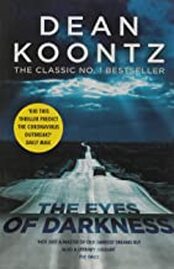 It has been claimed that some authors have “predicted” the Covid-19 pandemic. No, they haven’t (“The Eyes Of Darkness” by Dean Koontz is one that is cited). Those authors have taken what they know about historical outbreaks of diseases and linked it to knowledge of modern scientific research into viruses and used that to create an imaginary pandemic. In fact Koontz’s virus doesn’t cause a pandemic, it causes a child to become psychic, but that isn’t explained by the people who cite the book as a “prediction”. The fact that any book uses a pandemic caused by a rogue virus that spreads quickly isn’t a prediction, it is a knowledge of history: a knowledge of the spread of the Black Death, of hantavirus, of yellow fever, typhoid, typhus, polio, cholera and, one of the biggest up until now, influenza. They didn’t even have to imagine the most common symptoms of Covid-19, because they could borrow most of those from Spanish Flu, Swine Flu and Bird Flu, the latter two both being caused by the SARS virus, of which Covid-19 is also a strain. Add the words “biological warfare” and/or “rogue government” to the mix, exaggerate the severity of the illness and you have a good sci-fi plot in the making. As for most other sci-fi, some of what was “predicted” has happened.  The classic Star Trek communicator The classic Star Trek communicator The communicators used in the first series of Star Trek are no more than our modern mobile phones. And no, they weren’t a prediction. Research had already started into portable telecommunications systems small enough to fit into a pocket. It just took a few more years for the technology to arrive that turned the research into a reality and the technology came out of projects that were already running – the American and Russian space programmes. And those programmes came out of the Second World War secret weapons developed by the Nazis. Modern super computers came out of the work of the code breakers at Bletchley Park in World War II and they borrowed heavily from the work of Charles Babbage (1791 – 1871) and other pioneers. So, have you had a great idea for something that we could do with around here but don’t presently have because of a lack of technology? Write it into the plot of a book and you could be hailed as a clairvoyant. While someone else will take your idea and start on the hard work of developing the technology to make it happen. Some things we still aren’t so sure about, of course. Faster than light travel, for example, which we would need for deep space exploration, is not thought to be possible. But several writers have predicted it (including me). But first we’ve got to get past all that messy e=mc squared stuff. If you have enjoyed this blog and/or found it informative, be sure not to miss any future posts by signing up for our newsletter. Just click the button below. We promise not to spam you and you can unsubscribe at any time. 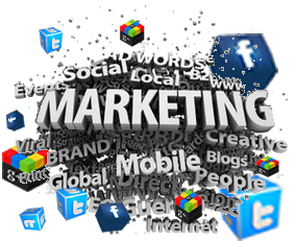 Here at Selfishgenie Publishing we use social media as a marketing tool. If you read our series of blogs on the subject (still available in the archive) you will see that it is cheap and quite effective if used well. However, there is a darker side to social media marketing and people are falling for it every day. Actually, there are two dark sides. The first is dark, the second is very dark. The plain dark is the way social media is used to capture your personal data, which is then sold to third parties so they can bombard you with advertising. We’re not talking about the usual clicking of the “agree” button for terms and conditions. That is just the way that social media sites make money by letting you use their platforms for free. If you don’t agree, you can’t use the platform. Seemples. 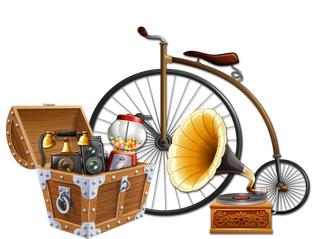 No, we mean the way memes are used to capture data. You may think it’s just a fun question for you to answer, but it isn’t. It is aimed at grabbing a little snippet of personal data from you that will be of use to someone in targeting their adverts. Not only that, but you even give them the address to which they can send the advert. I’ll give you an example. One meme that appears quite regularly is “Name something from your childhood that young people today wouldn’t understand.” Sounds harmless, doesn’t it? Just a bit of fun. But your answer puts you firmly into a specific age bracket. That tiny scrap of data can then be used to target you for adverts aimed at your age group. If you happen to be our age, it might be stairlifts, funeral plans or walk-in bathtubs.  And how do they get your address? It’s your social media username, which shows up every time you reply to one of these posts. That gives them access to your profile as well, which probably provides them with even more personal data. It also tells the person that posted the meme something else about you. It tells them you were gullible enough to respond to the meme. And if you were gullible enough to do that, you may be gullible enough to fall for an advert for a substandard, or even non-existent, product.  Other age-related questions are based around subjects such as music (a song or band name can give away the decade when you were a teenager), films, books, TV shows, the car in which you learnt to drive etc. So, what is the “very dark” side of these memes. It relates to cybercrime. It’s the questions that are aimed at trying to get hold of your passwords so that your accounts can be hacked. You may think I mean your bank accounts, Paypal etc, but I don’t. I mean your social media accounts, because many of these are used as the basis for scams of one sort or another. "You may think that none of your friends would be stupid enough to fall for a scam"  If I can make myself appear to be you, by posting on one of your social media accounts, then your friends may trust what has been posted. It also allows me to access the list of all your social media friends, which I can sell. You may think that none of your friends would be stupid enough to fall for a scam, but hundreds of thousands of people across the world, good, honest and above all intelligent people, have fallen for these scams. It only needs one of your hundreds of social media friends to fall victim for the scammer to win. So those sorts of posts will ask you about your first car, your first pet, your first school and a whole lot of similar things because those are the sorts of things that are used as passwords or as the answers to security questions. These also include you “pornstar” or “stripper” names, or even your secret agent name. eg “The last thing you ate and the name of your first pet is your secret agent name.” You wouldn’t tell someone your account number and password for your bank account, but you are happy to tell them the name of your first pet – which is almost as revealing. There are other ways of getting the account number and password, you’re just making things a bit easier for them when they try to hack your account, by providing the answers to the security questions or memorable information  So, other than the age-related memes, what others should you be on the lookout for? The most obvious ones are worded like this. “You are about to be attacked by a zombie. The last thing you bought is the weapon you must use to fight it. What will you use?” That’s quite an easy one to identify, because it relates directly to products. If you bought the thing you are going to use against this hypothetical zombie, then you’re likely to buy more of the same. How about this one. “It’s your best friend’s birthday today. The nearest thing to your right hand is what you will be giving them as a birthday present. What will they get?” Again, this is product related, because whatever you answer can then be used to target you for similar products. If you say “a plate of biscuits”, then you’ll be targeted for biscuit advertising (or, more likely, sweet things in general). You may also become a target for advertising for plus sized clothing or dieting aids.  An answer related to smoking products may result in you being targeted for nicotine replacement therapies, books on how to stop smoking or drugs to help you stop smoking (which may or may not work and may even be harmful to your health). OK, how about something a little bit different. “The last place you visited is where you will spend your honeymoon. Where will you go?” Whatever your answer, you will be targeted for advertising for similar destinations, cheap airline seats, hotels, etc. Now, if you don’t mind being targeted for advertising, then there’s nothing wrong with any of this. But if you’d rather spend your social media time actually socialising, rather than scrolling through adverts, you might do well to avoid responding to those memes.  You may think that your “advertising preferences”, which you have carefully selected on your favourite social media sites, will protect you against these adverts. You would be wrong. These simply tell the site’s owners (Facebook, Twitter, Insta et al) who they can direct adverts for certain products towards in order to maximise the number of clicks for the advertisers. They won’t prevent you from seeing advertising from other sources that are paying those same sites to “boost” a post or whatever term the site uses. Believe it or not, there is no way that you can actually prevent advertising from appearing on your social media pages. All you can do is tell the sites which products you’re not too unhappy seeing. You’ll see all the others anyway because they’re paying the social media site to blast the adverts out to anyone who has an account. But giving away your little bits of data allows those “blast it out” type of advertisers to refine their audience by targeting you personally, by age, gender, interests, purchasing habits, cultural tastes etc  And, when you ask yourself “How did they know that about me?”, the answer will be “Because you told them.” Many of the products will be genuine but remember what we said about targeting the gullible. That’s how scams work, because they’ll try to get your money by selling products they have no intention of ever delivering. How do you know they actually own that holiday cottage or Spanish villa they are offering to rent you? They will also try to sell you products which may not conform to safety standards. You have no idea where the sellers of the products may be based, so you have no way of finding out if they are reputable. There are ways of countering this form of data snatching and that is to tell lies. If the data that is captured is inaccurate it becomes useless, because the advertiser is directing their adverts towards people who won’t buy their product or service (whether it’s real or a fake). That means they are wasting their money and will have to find some other way of identifying their target audience. They will find that way, of course, but there’s no need for you to collaborate with them in their search. “Does this tell somebody something about me that they didn’t, or couldn’t, otherwise know?”  There is one thing we can all do when we read these memes. It is to ask ourselves one simple question: “Does this tell somebody something about me that they didn’t, or couldn’t, otherwise know?” If the answer is yes, you are making an informed choice about whether or not to post your answer. You don’t have to. It isn’t compulsory. And if you choose not to answer, you will reduce the amount of advertising (real or scam) that appears on your social media feeds. For the darker forms of data capture, the ones that are aimed at finding out the answers to security questions, then the questions is much simpler. “If I answer this question, could it compromise the security of any of my accounts?” Again, telling lies in answer to the questions makes the information useless and it will frustrate the scammers, which is actually a result for us good guys. One thing of which we can be sure is that the people who post these memes aren’t acting in your best interests. If they were, they wouldn’t be hiding behind fake user IDs and asking seemingly innocent questions in order to grab your personal data. It’s up to you whether you co-operate with them, but we recommend you don’t. If you have enjoyed reading this blog, or found it informative, why not make sure you don't miss future editions by signing up for our newsletter. We promise not to spam you, or to sell your data to scammers. Just click on the button below. |
AuthorThis blog is compiled and curated by the Selfishgenie publishing team. Archives
March 2025
|
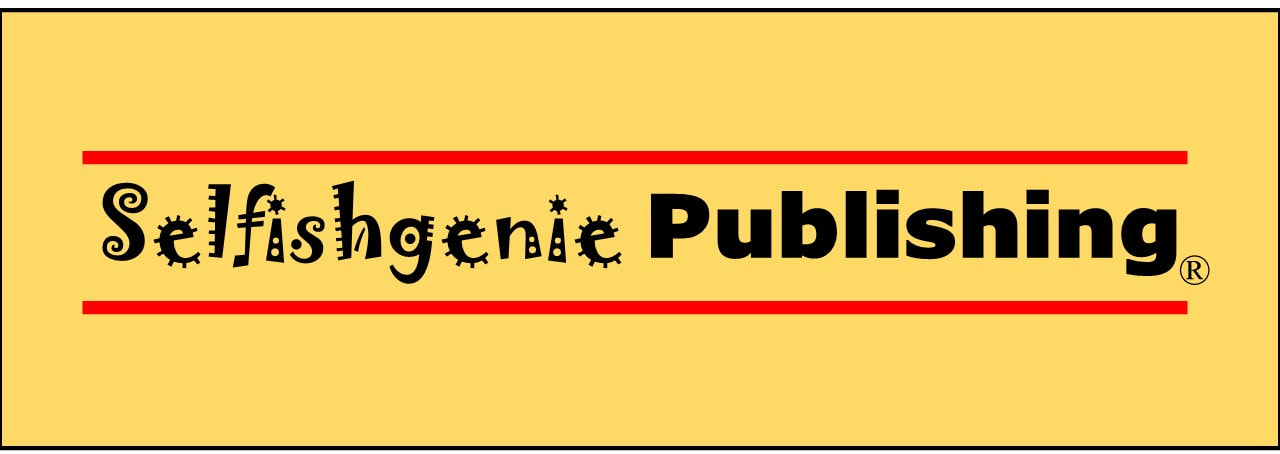
 RSS Feed
RSS Feed